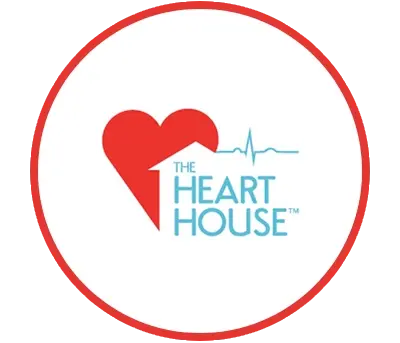Coronary Interventions
What are Coronary Interventions?
Coronary artery disease (CAD) is the buildup of plaque inside the coronary arteries, the blood vessels that supply oxygen-rich blood to the heart muscle. This accumulation of plaque, known as atherosclerosis, causes the arteries to narrow and harden, restricting blood flow to the heart. Reduced blood supply can lead to chest pain (angina), shortness of breath, heart attack, and other symptoms.
If lifestyle changes and medication are not enough to control coronary artery disease symptoms, your cardiologist may recommend a coronary intervention. These procedures can improve blood flow to the heart by opening or bypassing blocked arteries.
There are several different types of coronary interventions, including:
- Angioplasty and Stenting
This is the most common type of coronary intervention. It involves inserting a catheter into a blood vessel in the groin or arm and threading it up to the heart. A balloon is then inflated at the site of the blockage to widen the passage. A stent, a small mesh tube, may then be placed to keep the artery open, promoting better blood flow. - Coronary Artery Bypass Graft (CABG)
This surgery involves creating a new pathway for blood to flow around the blocked coronary artery. A graft, such as a piece of vein or artery, is taken from another part of the body and sewn into place around the blockage. - Atherectomy
This minimally invasive technique involves removing plaque from the coronary arteries using specialized tools, restoring blood flow and reducing the risk of future blockages. - Thrombectomy
In cases of acute heart attack, a thrombectomy may be performed to remove blood clots from the coronary arteries, restoring blood flow and preventing further damage to the heart muscle. - Fractional Flow Reserve (FFR) and Intravascular Ultrasound (IVUS)
These advanced diagnostic tools help cardiologists assess the severity of blockages and guide treatment decisions for more precise and effective interventions.
Benefits of Coronary Interventions
Coronary interventions, such as angioplasty, stenting, and coronary artery (CABG), are advanced procedures aimed at treating coronary artery disease (CAD) and improving heart health. Here's why the benefits of coronary interventions make them crucial in managing heart conditions and enhancing patients' well-being.
Benefits of Coronary Interventions
- Improved heart function
Coronary interventions are designed to restore blood flow to the heart muscle, which may significantly improve heart function. By addressing blockages in the coronary arteries, these procedures alleviate symptoms like chest pain (angina), and shortness of breath, leading to enhanced overall heart performance. - Reduced risk of heart attack
By effectively treating narrowed or blocked arteries, coronary interventions lower the risk of heart attack and other life-threatening cardiac events. The interventions not only improve patients' quality of life but also contribute to increased longevity and reduced mortality rates. - Minimally invasive techniques
Most coronary interventions are performed using minimally invasive techniques, involving small incisions or catheter-based approaches. This results in shorter recovery times, less pain, and reduced risk of complications compared to traditional open-heart surgeries. - Personalized treatment
Our experienced cardiologists tailor each intervention to the specific needs and conditions of the individual patient. This personalized approach ensures the best possible outcomes and addresses unique challenges presented by the patient's heart health. - Enhanced quality of life
Patients who undergo coronary interventions often experience a dramatic improvement in their quality of life. With reduced symptoms and increased heart function, they can engage in daily activities and enjoy a more active, fulfilling lifestyle.
What to Expect Before, During, and After Coronary Interventions
Coronary intervention procedures begin with a comprehensive assessment of your heart health and medical history. Based on the results of diagnostic tests, our experienced cardiologists will develop a personalized treatment plan tailored to your specific anatomy and needs.
On the day of the procedure, our skilled interventional cardiologists will perform the chosen intervention, such as angioplasty or stenting, to open blocked arteries and restore blood flow to your heart. After the procedure, you will be closely monitored and receive detailed post-procedure instructions to ensure a smooth recovery. Follow-up appointments and cardiac rehabilitation may be recommended as part of your ongoing care.
To reduce your risk of future heart problems after a coronary intervention, you may be advised to make certain lifestyle changes, such as quitting smoking, adopting a healthy diet, and incorporating regular exercise. You may also need to take medications to control cholesterol and blood pressure and blood thinners to keep the stent open. Here are a few things to consider post-procedure:
- Your recovery time will depend on the type of procedure you received.
- You must take your medication as prescribed to help prevent complications.
- You must contact your cardiologist immediately if you see any redness, swelling, or drainage.
- You must familiarize yourself with the symptoms of a heart attack so you can seek medical attention immediately if you experience them.
- You must avoid restricted activities for as long as your cardiologist has prescribed.
Am I a Candidate for Coronary Interventions?
If you have coronary artery disease, your cardiologist will thoroughly assess your condition to determine if you are a suitable candidate for an interventional procedure. Specific factors evaluated include the severity of your symptoms, extent of arterial blockage, heart function, other medical conditions, and your age and overall health profile.
Your eligibility will depend on your unique case as well as the type of intervention being considered. Less invasive approaches like angioplasty and stenting have a lower candidacy threshold compared to open heart surgery. Some of the criteria considered include:
- Chest pain
Chest pain is a common symptom of coronary artery disease. It can be caused by a narrowing or blockage of the coronary arteries, which reduces the flow of blood to the heart muscle. If you are experiencing chest pain, it is important to see a doctor to get a diagnosis and discuss treatment options. Certain patients may experience additional symptoms, like shortness of breath, fatigue, sweating, and nausea. Women and diabetics may experience atypical symptoms. - Electrocardiogram (EKG) findings
An EKG is a test that measures the electrical activity of your heart. It can be used to diagnose coronary artery disease. If your EKG shows abnormalities, it may indicate that you need additional testing. - Angiogram results
An angiogram is a procedure that uses X-rays to look at the coronary arteries. It can be used to identify blockages and to assess the severity of the disease. If your angiogram shows blockages, it may lead to a recommendation for stenting or other intervention. - Symptom severity
The severity and frequency of your chest pain can affect your candidacy for coronary interventions. If you are experiencing frequent, severe chest pain with minimal activity, it is more likely that you will need intervention. - Extent of blockage
Major, flow-limiting blockages are more likely to require treatment than minor narrowings. - Heart function
Imaging tests can help assess if impaired blood flow is affecting your heart function. Coronary intervention may improve or restore heart function. - Prior procedures
If you have had previous stenting or bypass surgery, it may increase the procedural complexity of future interventions. However, if the blockages have recurred or worsened, you may still be a candidate for further treatment. - Patient preference
Ultimately, the decision of whether or not to undergo coronary interventions is a personal one. You should discuss your individual circumstances and preferences with your doctor to make the best decision for you.
Take Charge of Your Heart Health with Coronary Interventions
Our board-certified cardiologists will listen closely, understand your health goals, and recommend a personalized treatment plan using leading-edge cardiovascular care. We offer medical therapy, advanced diagnostic testing, minimally invasive procedures, rehabilitation services, and more. Whether you need preventive care, have an established heart condition, or fall somewhere in between, we can help safeguard the health of your heart.
Photo Gallery
Video Gallery
Testimonials
Photo Gallery
Get To Know Our Cardiologists
In Search of Care? Request a Consultation Today










